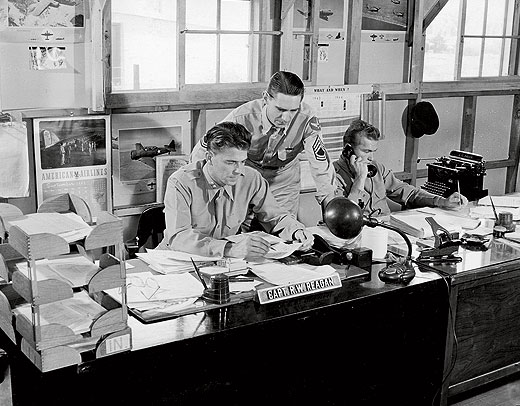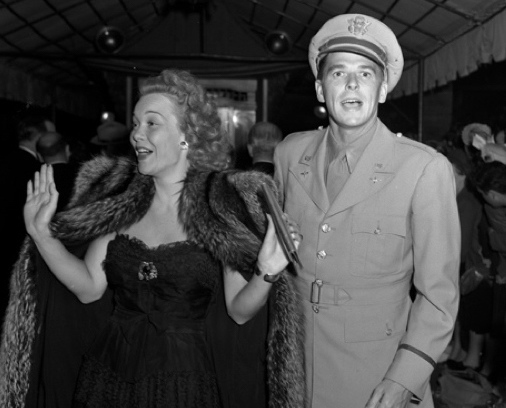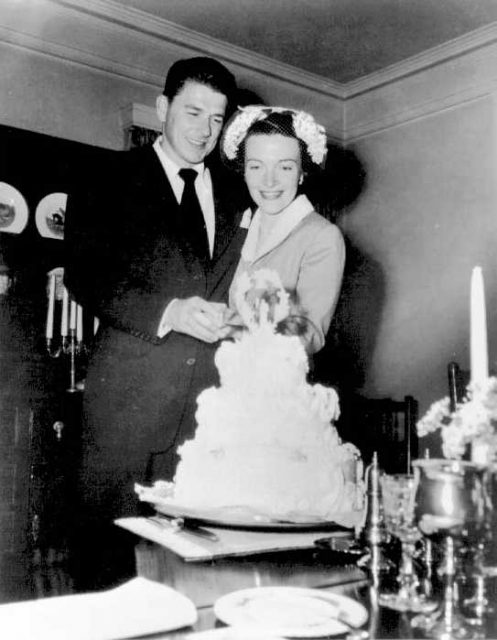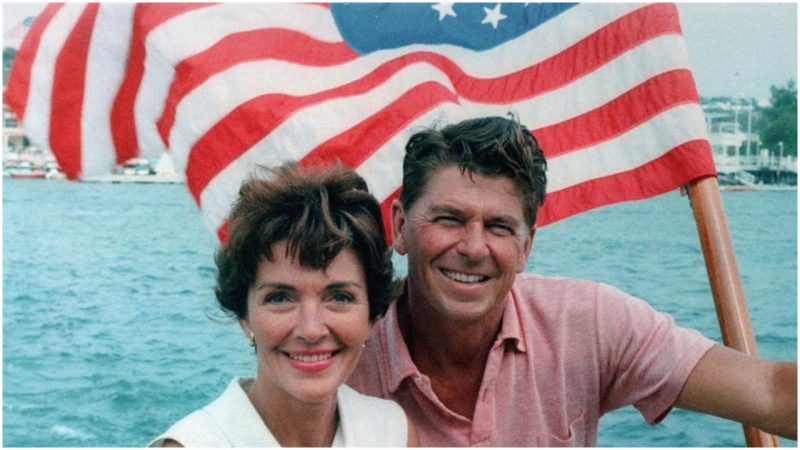For many, Ronald Reagan was one of the most popular and effective Presidents of the United States. His disarming charm and ability to communicate to a wide range of people earned him the moniker the “Great Communicator” and the more personal nickname “The Gipper”. He was one of the first leaders to make the transition from Hollywood to the political arena.
It’s well known that he testified before the House Un-American Activities Committee (HUAC) in 1947, naming names in the national paranoia over Communist infiltration.
But what’s less known is his deeper connection to anti-Communist activity, and the role the hunt for potential insurgents would play in his personal life.

Before he entered the White House, Reagan held office as President of the Screen Actors Guild. His tenure began in ‘47, following a decade in the limelight appearing in movies such as Kings Row (1942). Though being a staunch opponent of the “Red Menace,” there was one thing he had to thank it for… meeting the love of his life.
As related on his page for Biography.com, “he met actress Nancy Davis, who had sought his help after she was mistakenly listed as a possible communist sympathizer on the Hollywood blacklist.” The allegations proved unfounded, and Nancy became Ronald’s second wife in 1952.

Two years later and he was working as the host of The General Electric Theater, a CBS TV/radio show paid for by the famous power giant’s public relations arm. The anthology series certainly packed in the stars, from Cary Grant to Judy Garland. Yet the man introducing their exploits was reportedly experiencing a change behind the scenes.
While associated with the Democratic movement, Reagan’s views altered when asked to travel the country by General Electric as part of a PR exercise. It’s claimed by Biography that it was “during this time that his political views shifted from liberal to conservative; he led pro-business discussions, speaking out against excessive government regulation and wasteful spending—central themes of his future political career.”

Tracing the development of Reagan’s conservative leanings is an inexact science. However its roots could possibly be detected in an earlier phase of his career, when he worked for the FBI as an informant, beginning in the early Forties.
An article in the Chicago Tribune from 1985 details the 155 page document kept by the Bureau and released after a Freedom of Information request from the San Jose Mercury News. The first interview the FBI conducted with Reagan was in 1943, and recalled a heated incident involving an anti-semite in California.

The Tribune reports “Reagan, then 32, was assigned to the Army Air Corps’ motion picture unit at Camp Roach in Culver City… Reagan told of nearly ‘coming to blows’ with the German sympathizer who made several anti-Semitic remarks at a cocktail party.”
It being a venue where the alcohol was in full flow, no wonder tempers were frayed: “he emphasized that considerable drinking had been done by all persons involved.”

More intriguing revelations included the involvement of Reagan’s first wife, the actress Jane Wyman, with his endeavors. When Nancy Davis asked for his assistance to tackle accusations of un-American behavior, she was probably unaware both he and Wyman had patriotically scanned the Guild, passing on information about potential Reds to the Feds.

Reagan and Wyman were married in 1940, two years after the formation of the HUAC. History.com writes that the House “wielded its subpoena power as a weapon and called citizens to testify in high-profile hearings before Congress… HUAC’s controversial tactics contributed to the fear, distrust and repression that existed during the anti communist hysteria of the 1950s.”

The hysteria was partly fueled by cases such as the Hollywood Ten, a selection of creatives of whom Dalton Trumbo was a member. They were called before the Committee the same time as Reagan in 1947.
The scenario was dramatized in the 2015 movie Trumbo starring Bryan Cranston, though the future President was not depicted. An interesting coincidence of sorts is that Reagan’s codename in the Bureau document was “T-10.”

Despite Reagan agreeing with the HUAC’s aims, he found their methodology troublesome. He expressed these doubts to the Bureau. Quoted in the Tribune, he asked an agent: “Do they expect us to constitute ourselves as a little FBI of our own and determine just who is a Commie and who isn’t?”
For Reagan, this was a job for experts, not the great and good of the show business elite. Nevertheless, Tinseltown was seen as a prime target for Communist invaders and the community was watched like a hawk. His protests continued, a notable example being when he objected to a group of crusading Commie-spotting producers.

“He stated he did not feel it was within the authority or ability of any single man or group of men within the motion picture industry to be able to determine accurately and fairly who should be fired and who should not be fired.”
His worldview became increasingly right wing, but beforehand he was a dedicated union man. There were various organizations he was involved that were themselves under scrutiny.

The “American Veterans Committee and the Hollywood Independent Citizens Committee of the Arts, Sciences and Professions” are named, groups “which the FBI considered Communist-front organizations… Reagan, who was then spending as much time on union activity as acting, quit both groups because of his distrust of Communists.”

Reagan displayed a perhaps surprising attitude toward his fellow performers when speaking to the HUAC. He did inform on possible Communists in the Screen Actors Guild, though believed them to be “a tiny minority.” Reagan felt “the best response lay in democratic trade unionism.”

He went on to become arguably one of the most consequential and loved Republican Presidents in U.S. history. Taking the role of Commander in Chief in 1981, he “helped redefine the purpose of government and pressured the Soviet Union to end the Cold War. He solidified the conservative agenda for decades after his presidency.” (Biography.com)
The “convoluted ‘arms-for-hostages’ deal” dubbed the Iran-Contra affair, which sought to “funnel money toward anti-communist insurgencies in Central America” was widely regarded as an error in judgment.

Following a period of denial, Reagan admitted to knowledge of the affair after some persuading from a source close to home: “Reagan later announced that it was a mistake partially at the behest of the first lady.” Decades after he’d saved Nancy from the perceived stain of Communism, so she stepped in to steer him on the right path.

It’s easy to view Reagan’s dealings with the FBI as dramatic and worthy even of a motion picture. But sources from inside the Bureau state his role was strictly on the fringes and he certainly didn’t stray into G-Man territory. Still, Ronald Reagan’s early relationship with American crime fighters appears to be an important stepping stone on his path to the White House.
He stayed a figure of fun, notoriously lampooned on satirical shows such as Spitting Image. Images of him nursing a chimp in the 1951 comedy Bedtime For Bonzo came back to bite him on more than one occasion. Ascending to Leader of the Free World undeniably took him to more serious heights and to many he was an American hero.
Read another story from us: Larry King accidentally rear-ended JFK
His legacy, both spoken into the tape recorders of Special Agents and broadcast to the nation via the Oval Office, ensures his status as a memorable figure in both film and political history.
